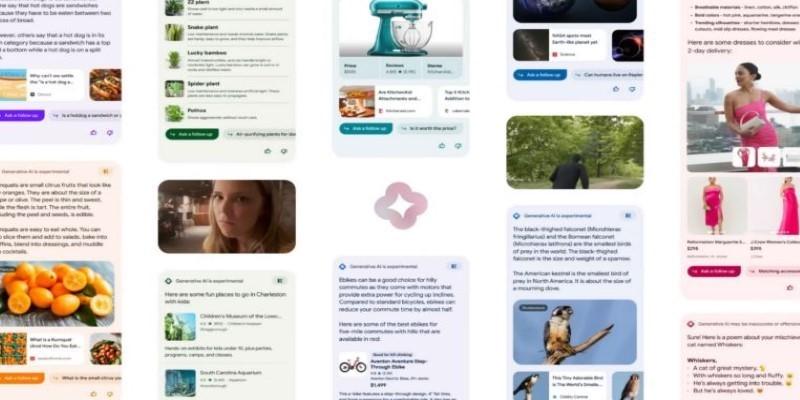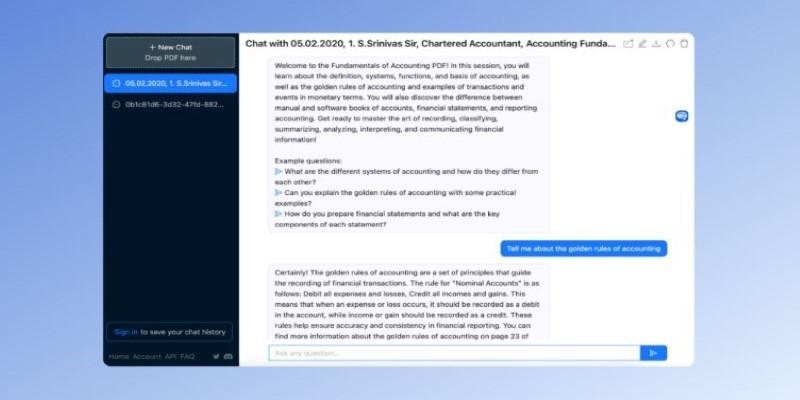Planning a vacation used to involve hours of research, comparing reviews, and juggling multiple apps. It often meant guessing at what might be fun, hoping nothing slipped through the cracks. Google is now stepping in with something new: an AI-powered system that can help shape your next trip from start to finish.
Whether you know exactly where you want to go or just have a rough idea, this technology takes your input and turns it into something useful, a full plan that feels like it was built just for you, without the hassle of doing everything by hand.
Google is now integrating generative AI into the way people plan trips. The idea is simple: instead of typing out specific dates or searching by categories, you describe the kind of trip you’re imagining. You might say, “Plan me a relaxing three-day getaway near the coast with local food and a nature hike.” The AI will then pull together a plan that includes transportation, places to stay, meals, and nearby activities, each tailored to the tone and shape of your request.
The system can combine your search habits, Gmail bookings (if enabled), calendar entries, and Maps activity to offer options that match your preferences. If you usually avoid chain hotels or prefer morning flights, the results reflect that. If you always travel with kids, the suggestions lean toward family-friendly places. This personal context saves time and can lead to a better fit between your plans and your personality.
All of this is built on Google’s vast store of information. It uses real-time availability, pricing, reviews, and even recent photos from Maps to make sure the suggestions are up to date. Rather than working from a fixed list of recommendations, the AI trip planner adjusts as conditions and user input change.
Google isn’t just upgrading one tool—it’s creating a connected system across Maps, Search, and Bard. In Maps, AI now helps with visual search. You can look for “quiet cafes near Rome train station” and see photos first, rather than just names or addresses. These images are tied to actual locations and include summaries, hours, and visitor feedback, making it easier to pick places without needing deep research.

Bard, Google’s conversational AI assistant, is built to offer back-and-forth trip planning. You might start by asking about a hiking trip in Oregon. Bard can suggest routes, parks, and towns to base your stay. Then you can ask follow-ups like “What’s the best season for waterfalls?” or “Are there dog-friendly cabins nearby?” Because Bard connects directly to Google’s broader ecosystem, it can provide live links to booking platforms, hotel reviews, or Maps locations without making you retype anything.
The conversation doesn’t reset when you change topics slightly. Bard can remember earlier requests and fine-tune results as your plans shift. This reduces the friction of starting over every time you want to adjust a detail or explore a different option.
AI is helping close the gap between casual trip ideas and actual bookings. Once you’ve described your ideal trip, the planner builds a working itinerary. You can edit, rearrange, or skip parts as needed. If you’re curious about local events during your visit or want to avoid weather disruptions, the system can update your plan accordingly. Everything stays editable until you decide it’s final.
When it comes to booking, Google connects with airlines and hotels directly through its search tools. You can track price trends, set alerts for fare drops, or get flexible options in case your plans aren’t locked in yet. The idea is to move smoothly from browsing to booking without switching between apps or copying details across tabs.
For people who prefer more control, you can turn off personalized suggestions or limit how much information the AI can use. You don’t have to link Gmail or Calendar, though doing so improves the AI travel planner’s ability to time things around your schedule or past travel habits.
This process also helps reduce planning anxiety. Instead of worrying whether you’ve missed something important—like an activity that needs reservations or a hotel with poor transport access—the AI highlights those things early. It works more like a helpful assistant than a passive search bar.
Google’s approach signals a bigger trend in how people will travel going forward. AI isn’t just answering questions; it helps build experiences. It listens, adjusts, and even anticipates common roadblocks. This kind of support makes travel easier for everyone, from seasoned planners to people who find the process overwhelming.

An AI travel planner is especially helpful for travelers who are short on time. Instead of spending hours pulling ideas from blog posts or message boards, you get a complete plan that you can tweak as needed. The system can handle logistics while you focus on what really matters—what you want to see, eat, or explore.
Technology is still evolving. Right now, it works well for major destinations and common trip types, but over time, it will expand to cover more locations and travel styles. As more people use these features, the system learns from how real travelers behave—what they skip, what they add, and what gets booked. That feedback helps shape future suggestions, making them even more relevant.
It’s not about handing over your whole vacation to a machine. It’s about getting a helpful push in the right direction, so the experience feels easier and less rushed. AI can handle the planning grind while you make the final choices.
Google is changing travel planning by using AI to handle the time-consuming parts. Instead of adding more features, it focuses on simplifying the process—from search to booking—by understanding your habits and responding in everyday language. You stay in control, but the AI speeds up tasks like comparing options, checking maps, and organizing schedules. Whether it’s a big international trip or a short weekend getaway, an AI travel planner helps make everything easier while keeping your travel choices flexible and personal.

Find out what Retrieval Augmented Generation (RAG) is. Explore its key features, benefits, and real-world applications.

How clique-based compression and advanced techniques revolutionize efficient graph storage and analytics for large, clustered graphs.

How building safe, reliable, and ethical AI systems can unlock their potential while minimizing risks and gaining public trust.

How AI revolutionizes productivity, education, and business by fostering collaboration between technology and human intelligence.

Learn the top 5 ways for efficiently analyzing Power BI performance using DAX Studio for better insights and analysis.

Google wants you to use AI for your next vacation by turning complex travel planning into an easy, conversational process. Discover how its AI travel planner simplifies everything from trip ideas to bookings

How to connect Bard to Gmail, Google Docs, YouTube, and other popular Google services. Learn how Bard extensions help streamline tasks and improve productivity by linking your favorite tools in one place

Tired of scrolling through huge documents? Chat With AI to Summarize Obnoxiously Long PDFs and get quick, relevant insights without reading every page. See how AI summarization simplifies your workflow

Explore the differences between Midjourney and DALL·E 3 to find the best AI image generator in 2025. Compare styles, accuracy, usability, and more

How educational assessment techniques can improve how we evaluate large language models' inference capabilities, moving beyond accuracy metrics to assess true reasoning and understanding.

Discover powerful AI apps transforming productivity, creativity, communication, and everyday problem-solving

Discover eight real-world AI in e-commerce examples for 2025, from smarter shopping to personalization and future growth.